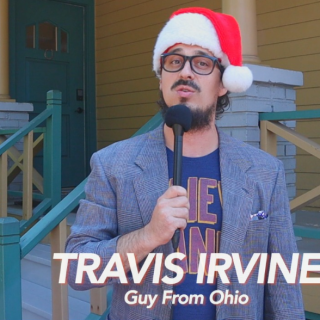Advertisement
Politics rears its head only toward the end of the National Geographic documentary Science Fair. That’s when various people complain about the current status of science in the U.S., whose officials routinely dismiss research on issues such as climate change and environmental health.
Otherwise, the film is an uplifting celebration of high school students who vie for the chance to win honors at Los Angeles’ Intel International Science and Engineering Fair (ISEF), a huge event that annually attracts 1,700 of the best and brainiest from across the globe.
Sure, the students are competing for a shot at fame and glory—and to impress the colleges and universities they hope to enter. But in the process, they put their intellectual skills to work on complex problems whose solutions could benefit us all.
The implicit message: If given half a chance, nerds could save the world.
Directed by Cristina Costantini and Darren Foster, the film follows a familiar pattern. Like Spellbound and countless other documentaries, it introduces us to a disparate group of youths as they prepare for an all-important competition. After delving into their backgrounds and reasons for competing, the film ends with the contest itself, where the youngsters we’ve come to know and love either achieve their victory or go home in defeat and disappointment.
What sets Science Fair a cut above many of its kin is the sheer variety of the featured youths. Because the fair is international, we get to meet committed students from around the world. Some have the advantage of attending prestigious schools with top-notch teachers and facilities, while others must rely only on their own smarts and gumption.
Perhaps the student who faces the most challenges is Myllena, a 17-year-old from a poor community in Brazil. With help from a classmate named Gabriel, she hopes to find a way to combat the Zika virus that has devastated her country and left many newborns with microcephaly and other birth defects. While waiting for the bus that will begin her long journey to ISEF, Myllena reflects on the financial and educational limitations she’s faced compared to many of the other competitors.
Among them are students from an academically advanced school in Louisville, Ky. There we meet 14-year-old Anjali, who vies in a qualifying event while speculating that many classmates must be jealous of the intellectual superiority that allowed her to skip two grades. We also meet Ryan, Harsha and Abraham, who seem to have little in common but somehow complement each other as they work together on a single project.
Others who compete with a built-in advantage are the students of a school in Jericho, N.Y. Their ace in the hole is teacher Serena McCalla, who seems to devote her entire life to badgering and shaming would-be ISEF competitors into doing their best. Her approach puts off many, but immigrant Doris, 18, says McCalla brings up fond memories of the tough teachers she faced in her native China.
Not every American competitor has academic advantages. One of the doc’s most compelling figures is Kashfia, a hijab-wearing Muslim and the daughter of immigrants from Bangladesh. Though she’s already won honors at a previous ISEF, her achievements were ignored by the sports-obsessed school she attends in South Dakota. Nevertheless, she prepares to fight her way back to the international event by tackling an ambitious study related to the school’s rampant drug problem.
Though the students we meet come from a variety of backgrounds, many have one huge advantage in the form of loving and supportive parents. Sometimes that support is given despite the parents’ general bewilderment over the child’s preoccupations and lifestyle choices—that’s the case with Robbie, a long-haired teen in a small West Virginia town. A more unequivocal expression of support comes from the Brazilian Myllena’s mother, who says she believes in two things: one, God; and two, her daughter.
If the documentary has one fault, it’s that it focuses so much on the personalities of the featured students that it glosses over the details of their projects. Nevertheless, it offers reassuring evidence that our country and our world are blessed with young people who, unlike our government, do not view “science” as a four-letter word.
Rating: 4 stars (out of 5)
Science Fair (PG) opened Sept. 28 at the Gateway Film Center.




